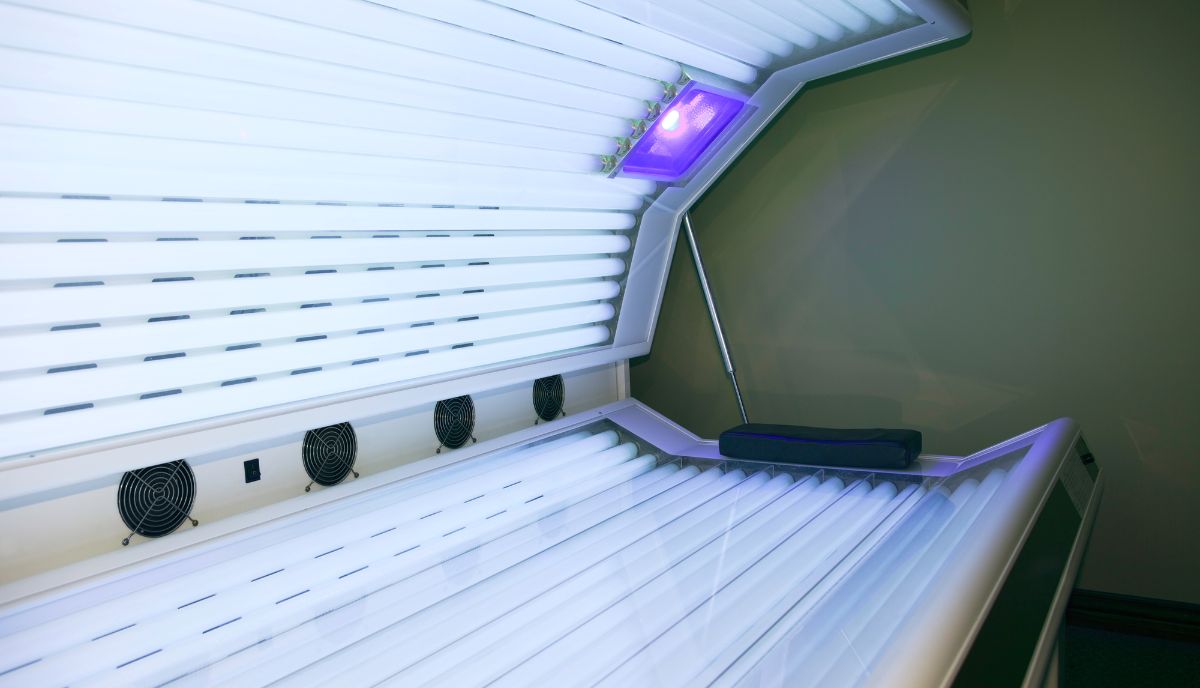
As everyone knows, tanning beds have become one of the hottest ways to get that tanned look. They give people the freedom to tan while they’re on vacation, or even while they’re at work in their own homes! But there are some common questions that many people have about tanning beds and whether it’s safe to tan with wet hair. The answers to these questions could make all the difference in getting that perfect bronze glow!
Can you tan in a tanning bed with wet hair? Whether you have just taken your shower and are planning to head to the tanning salon, or if you are already there and your hair is damp, you may be wondering whether it’s okay to get under the tanning beds while your hair is wet. The answer is yes! Many people choose to go through this process in order to enjoy the benefits of both indoor tanning and having wet hair. Keep reading to learn more about how this works.
What Tanning Salons Say About Wet Hair
One of the most important aspects of getting ready for a tanning session is your skin care routine. Tanning beds can cause people to dry out, so it’s essential to take steps beforehand to ensure your skin stays healthy. Moisturizing skin before entering the booth will help keep it hydrated and prevent cracking, irritation and sunburns. The only time moisturizer should be applied after you come out of the tanning bed is when you plan on going straight into another round of sunbathing without showering or washing off the lotion. Other than that, you should wait until you get home to moisturize because anything left on your skin can increase your chance for a burn due to residual UV exposure. Some salon-goers are careful not to use any products at all before entering the booth, but this technique could lead to premature wrinkles or unevenly tanned areas. However, if you are doing an all-day indoor tanning session at a salon with no breaks, it may be helpful to go through your normal pre-tanning rituals first then reapply them at designated intervals during the day.
Can Wet Hair Cause Skin Cancer?
– The UV radiation from indoor tanning beds is similar to the rays from natural sunlight, but it can be concentrated, which leads to an increased risk of skin cancer.
– There are some types of skin cancer that are more common among tanners than others, such as basal cell carcinoma and squamous cell carcinoma.
– Women who use tanning beds before age 35 have triple the risk of developing malignant melanoma.
– Sixty percent of tanners are using the beds without talking to their doctor first.
– The International Agency for Research on Cancer classifies indoor tanning devices as Group 1 carcinogens because they produce DNA damage even at doses considered low for sunburns. – The World Health Organization estimates that ultraviolet (UV) radiation emitted by tanning machines causes about 232,000 cases of non-melanoma skin cancers and about 6,600 cases of melanomas worldwide each year.
– In the U.S., these types of cancer are now the fastest growing type of cancers in women between ages 25 and 29 years old.
– A new study has found a strong association between indoor tanning bed use and cutaneous squamous cell carcinoma.
Does the Tanning Bed Make Your Teeth Whiter
Many people report that they feel healthier, look better and have more energy after their first time going to the salon. It is all of the reactions to see when you finally see your new and improved self. You might feel like a new person when it is all said and done, but you still want to look your best so you can continue on with life feeling good about who you are. Of course, before going out into the world again, it is important to ensure that not only do you look your best but also take care of yourself properly. The simplest way to freshen up after a visit would be to go home and get into the shower while washing your hair. If you use shampoo and conditioner, this should help restore any lost moisture in your hair. It is a good idea to keep the amount of conditioner consistent with what works for your hair type; otherwise, you will find that it will weigh down your strands or cause breakage. For example, someone who has dry or brittle locks may need to use conditioner sparingly whereas someone with thick curly locks will want to make sure that they coat every strand.
What Is the Best Way to Dry Your Hair?
Wet hair can make it difficult to tell how much sun your skin has been getting. To get the most out of your tanning session, it’s best to take care of your hair beforehand. There are two main methods of drying wet hair before stepping into a booth: towel-drying and blow-drying. Towel-drying works best if you’re trying to avoid any breakage and doesn’t want to blow dry, while blow-drying is the go-to method for saving time on drying. Blow drying will create more volume and make it easier to set your hairstyle post-tan, so I recommend doing that if you’re rocking an updo or curled style before walking into the booth. Once your hair is styled, just shake it out and comb through the tangles with a brush. If you do decide to go the towel route, be sure to give yourself enough time so your locks aren’t dripping wet when they step into the booth. As tempting as it may be to wrap your head up in a towel, don’t do this as this could cause heat damage.
Final Thoughts
Tanners should make sure they wait at least ten minutes after showering before entering the booth. In addition, it’s best to dry the skin with a towel and apply tanner before entering. If you do get your hair wet, allow your tresses to dry fully before indulging in some UV rays. For those living near water or who enjoy swimming and surfing, consider waiting two hours after last being submerged to allow the chlorine (and other pool chemicals) to dissipate from your locks before going under the rays. It is also important to note that not all sunless products are safe for use while tanning. Make sure you read labels carefully so as not to damage your skin by using unsafe products! A well-applied natural tan may protect your skin more than sunscreen would when outside.








